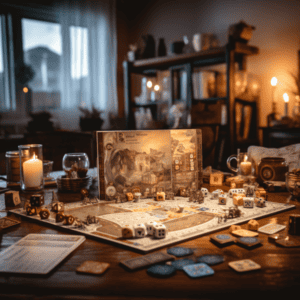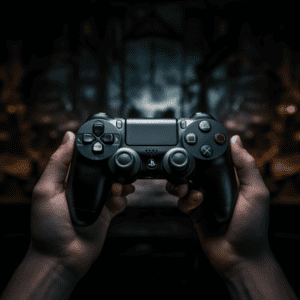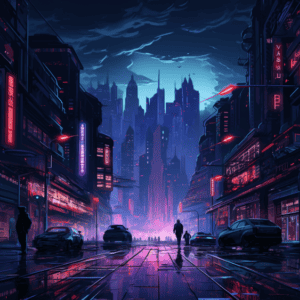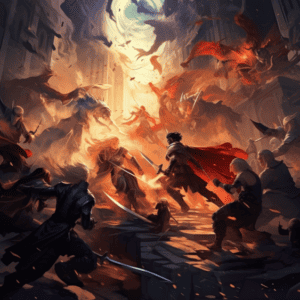
From Fighter To Mage: The Evolution Of JRPG Character Classes Over Time. Greetings, fellow adventurers! As a JRPG character class historian, it is my pleasure to take you on a journey through the evolution of our beloved RPG characters.
Many of us have grown up with these games and their iconic classes – from fighters who specialize in physical combat to mages who wield powerful spells. But how did these archetypes come to be? And how have they changed over time?
Over the years, we’ve seen the development of new technologies and ideas that have influenced the creation of various JRPGs. These changes have also impacted the way character classes are designed and utilized within gameplay.
From simple turn-based battles to complex skill trees and customization options, there’s no doubt that JRPGs have come a long way since their inception. So let’s dive into this fascinating world and explore the enchanting history behind some of our favorite character classes!
The Early Days Of JRPGs
Greetings, fellow adventurers! As a historian of JRPG character classes, I am honored to share with you the early days of our beloved genre.
In those times, games were simpler and less complex than they are now. Still, even in those humble beginnings, we can already see the seeds of what would become one of the most iconic aspects of RPGs: character classes.
The earliest types of magic users were simply called ‘mages’ or ‘wizards,’ and their abilities revolved around casting spells that dealt damage or offered various effects like healing or buffing allies.
Physical attacks using bladed weapons were common for melee characters, while defensive skills like blocking and dodging were also available.
The concept of different character classes was still relatively basic back then compared to today’s game mechanics – but it set the foundation for future innovations.
Stay tuned as we delve into the rise of magic users and how they changed everything about the way we play RPGs!
The Rise Of Magic Users

As the world of jrpg character classes evolved, so did the role of magic users. From simple White Mages casting basic healing spells to powerful mages summoning dragons and unleashing devastating spells, magic users have come a long way in the evolution of gaming.
- The rise of magical power: The introduction of Dragon Quest by Yuji Horii in 1986 was an important milestone for jrpg character classes. It introduced types of magic, giving players more choices on how they wanted to use their magical abilities. As games continued to evolve, we saw mages become more versatile with access to various kinds of magic such as elemental or even illusionary spells.
- Defensive Skills: Magic users also developed defensive skills like barriers against damage and enemy debuffs that made them integral parts of any party formation.
- Melee Attacks: While initially being known for their spellcasting prowess alone, some game developers allowed mages to develop melee attacks using bladed weapons or even two-handed weapons making them formidable fighters in close combat situations.
- Glass Cannons: However, it is always good to remember that despite their offensive and defensive capabilities, most magic-users remain glass cannons whose power could be easily diminished if not protected well.
As we continue our journey through the history of jrpg character classes, one thing remains clear – adapting to modern gaming needs is crucial for success. With new genres like first-person shooters and hero shooters emerging alongside classics like fantasy Role-Playing Games and science fiction epics like Baldur’s Gate; there is no limit to what can be achieved with proper planning and game design strategies.
Adapting To Modern Gaming Needs
As video games evolved, so did the needs of players. The traditional class systems that were once prevalent in RPGs had to adapt and change with the times. Game mechanics became more complex, and character classes needed to be more flexible to keep up.
Class systems’ evolution meant that there was now a greater emphasis on player choice. Players could customize their characters according to their preferences instead of being locked into basic classes like melee or mage. Character classes themselves also became more complex, with an array of abilities available for each one. Defensive skills, tide-turning abilities, illusionary spells – these were just some of the options open to players who wanted something different from the standard fare.
These changes made it possible for players to create unique characters suited for any type of game genre – whether it’s a first-person shooter or a Hero Shooter, science fiction or fantasy Role-Playing Games (RPGs).
As game design pushed forward, character classes continued evolving to meet modern gaming needs. Class systems now offer various types of magic such as Witch-like abilities and elemental abilities alongside magical power-based attacks; this makes mages even stronger than ever before! Melee characters have access to devastating spells while bladed weapons are still used efficiently against enemy debuffs. And among all these changes they’ve introduced new types of character classes too, including focus class, close-combat support class, front-line class and even prisoner class most recently found in Baldur’s Gate III which is gaining popularity fastly!
In conclusion, we can see how far the concept of character creation has come since Gary Gygax created his tabletop game Dungeons & Dragons back in 1974. Today’s gamers enjoy complex classes with an endless array of abilities at their fingertips making every playthrough feel fresh and exciting without sacrificing tradition gameplay elements like two-handed weapons for example.
Conclusion
As a JRPG character class historian, it is fascinating to see how the evolution of video games has impacted the development and refinement of character classes.
From the early days of simplistic fighter characters to the rise of magic users, we have seen a significant shift in gameplay mechanics.
Just like a mage learning new spells, game developers must adapt and evolve with modern gaming needs.
The addition of hybrid classes and customization options allows players to create unique characters that fit their playstyle.
It’s like watching an epic battle unfold before your eyes as these classes continue to change and grow over time.
As gamers, we can only imagine what exciting developments lie ahead for our beloved character classes in future JRPGs.






